Godzilla looks like Kedagang to me! 😉Just purchased godzilla and theija green off ebay reasonable prices
-
You are viewing the forum as a Guest, please login (you can use your Facebook, Twitter, Google or Microsoft account to login) or register using this link: Log in or Sign Up
You are using an out of date browser. It may not display this or other websites correctly.
You should upgrade or use an alternative browser.
You should upgrade or use an alternative browser.
Bucephalandra talk!
- Thread starter mafoo
- Start date
Jan szewczyk
New Member
New to the forum. And that article alone is worth been here. Fantastic read

Asking for some ID help...
Hi, several packets of unidentified Buces arrived at my LFS (its called C328 in case you follow Ryo Watanabe's youtube channel). Even the boss lady didn't know what they were. Given the price was equivalent to 5.40 pounds sterling a pot, I just gave it a shot.
They appeared to be farmed Buces so likely the common varieties. Left I'm guessing is Kedagang Red. Is the one on the right Theia? Its huge - Theias that have previously been sold in our stores are much smaller (I even have one in my tank and its a fraction of the size of this - or maybe its not even a Buce....). (The black clipboard on the right is A4 sized, for reference).
glasscanvasart
Member
The piece on the left is definitely ‘Kedagang Red’, I bought the same variety under the name ‘Godzilla’. The one on the right I’m not sure of, but it’s definitely a Bucephalandra species. Perhaps it would be easier to ID with submerged leaves.
CaridinaKid
New Member
So it’s about 6 weeks since i made a big order of Bucephalandra. Dozens of species, going to post some photos of my tank here. Take a look, any feedback, ideas, let me know.
1: Brownie Purple with a super-mini Catrine ‘base’ underneath.
2: Belindae
3: Full tank photo, a little cluttered but I’m holding all my best samples here, not much space, most of the front carpet is a mix of Brownie Adina, Dark Malawi and Red Dagger.
4: Skeleton King, received a couple of these, seeing some melt for sure- any tips?
5: Close up of several species, red dagger on left bottom, Theia Red on the rock, Variegated glued to lava rock
6: more Variegated
7: closeup shot
8: Ghost! My healthiest sample.
9: Filiformis, the most unique Buce I have
10: Flower dying on a Biblis
11: another shot of the Brownie Purple showing amazing colors
12: My Caridina Shrimp enjoying my Super mini catrine Carpet
13: Another nice Variegated sample, unfortunately the two largest leaves melted.
14: Bonus: very random plant, I went to a wedding by a lake in another country and pulled up what I believe to be Eurasian Watermillfoil, a small amount survived in my suitcase home and I planted it and it looks surprisingly nice!
I wish my aquascaping was better, I’ve ordered some spider wood and I’m going to be tying/gluing a lot of these plants to it, will post updates of course! Any feedback/tips appreciated.
Using Co2 (using the internal filter on the right with a diffuser stuffed under to disperse it better ), standard macro/micro dosing and Flourish Advance for root growth, perhaps a little on the lean side due to wanting lower TDS for Caridina shrimp inside.
For anyone wondering about me planting some of the Buce in the substrate, it’s been debated on this sub and I’ve personally found that Buce does seem to like to grow roots into the substrate and have better growth as a result since they have access to better nutrients, I do of course try to avoid having the rhizome in the soil.
1: Brownie Purple with a super-mini Catrine ‘base’ underneath.
2: Belindae
3: Full tank photo, a little cluttered but I’m holding all my best samples here, not much space, most of the front carpet is a mix of Brownie Adina, Dark Malawi and Red Dagger.
4: Skeleton King, received a couple of these, seeing some melt for sure- any tips?
5: Close up of several species, red dagger on left bottom, Theia Red on the rock, Variegated glued to lava rock
6: more Variegated
7: closeup shot
8: Ghost! My healthiest sample.
9: Filiformis, the most unique Buce I have
10: Flower dying on a Biblis
11: another shot of the Brownie Purple showing amazing colors
12: My Caridina Shrimp enjoying my Super mini catrine Carpet
13: Another nice Variegated sample, unfortunately the two largest leaves melted.
14: Bonus: very random plant, I went to a wedding by a lake in another country and pulled up what I believe to be Eurasian Watermillfoil, a small amount survived in my suitcase home and I planted it and it looks surprisingly nice!
I wish my aquascaping was better, I’ve ordered some spider wood and I’m going to be tying/gluing a lot of these plants to it, will post updates of course! Any feedback/tips appreciated.
Using Co2 (using the internal filter on the right with a diffuser stuffed under to disperse it better ), standard macro/micro dosing and Flourish Advance for root growth, perhaps a little on the lean side due to wanting lower TDS for Caridina shrimp inside.
For anyone wondering about me planting some of the Buce in the substrate, it’s been debated on this sub and I’ve personally found that Buce does seem to like to grow roots into the substrate and have better growth as a result since they have access to better nutrients, I do of course try to avoid having the rhizome in the soil.
Attachments
-
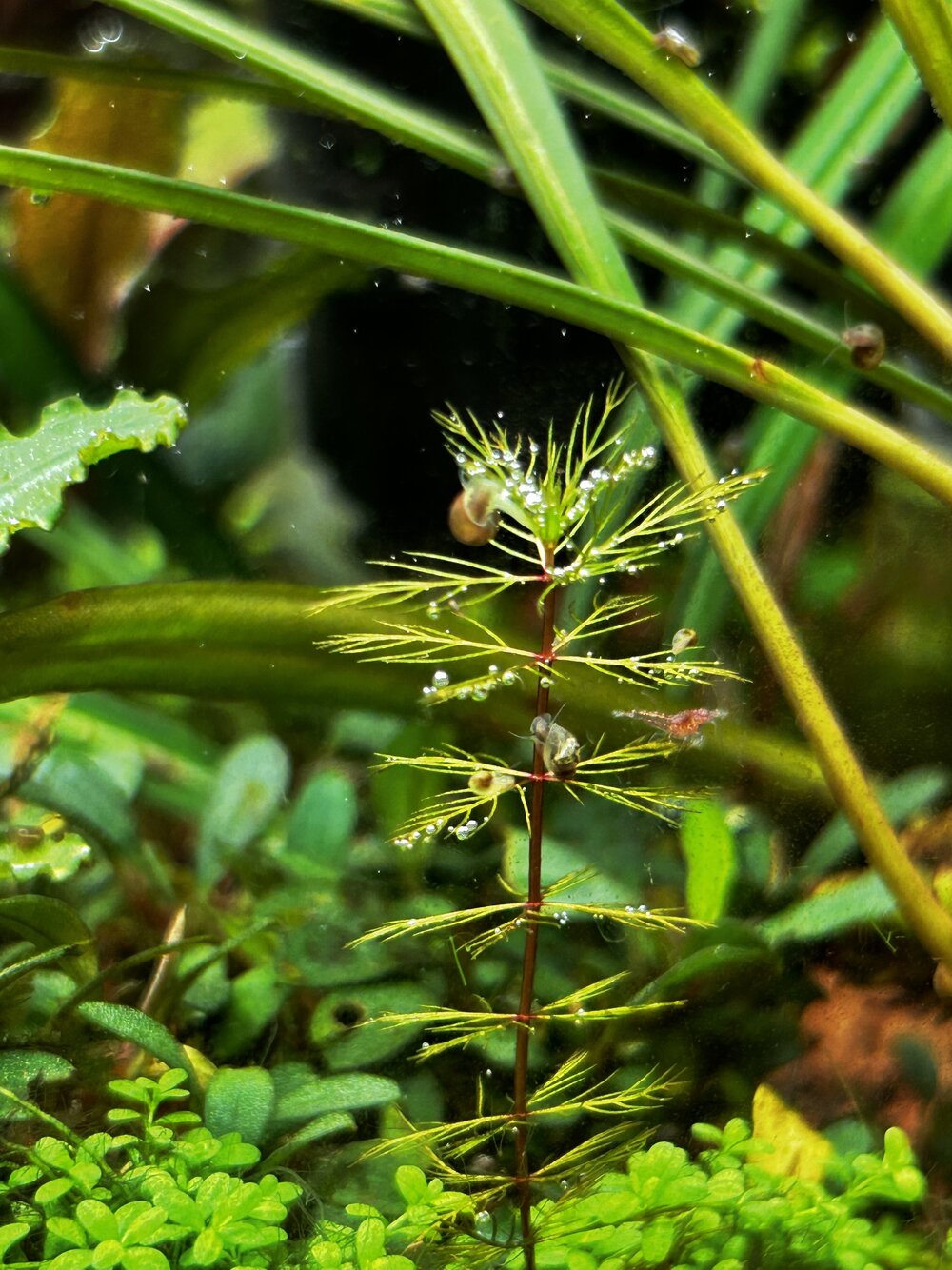 IMG_0195.jpeg1.4 MB · Views: 73
IMG_0195.jpeg1.4 MB · Views: 73 -
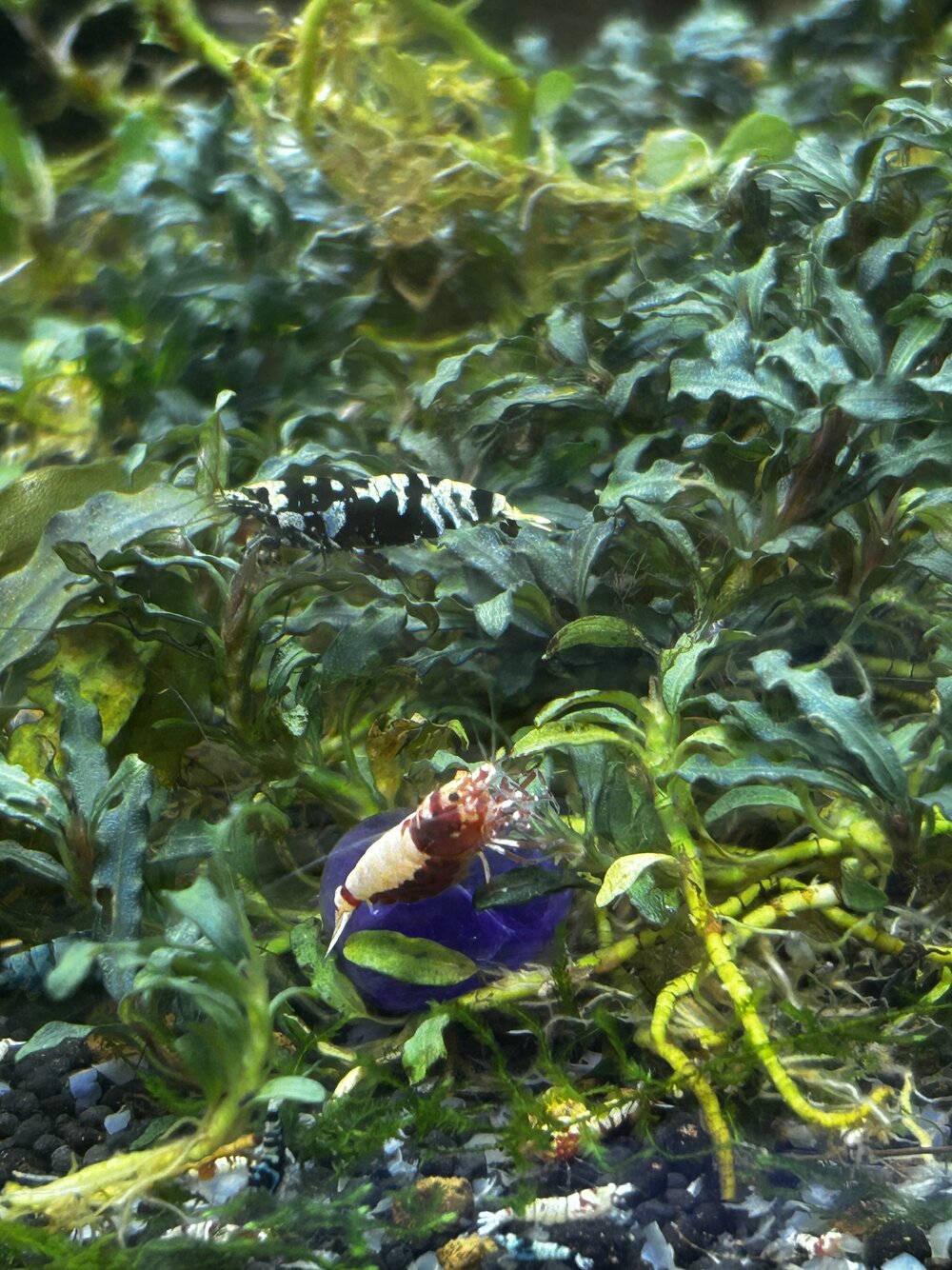 IMG_9988.jpeg1.5 MB · Views: 81
IMG_9988.jpeg1.5 MB · Views: 81 -
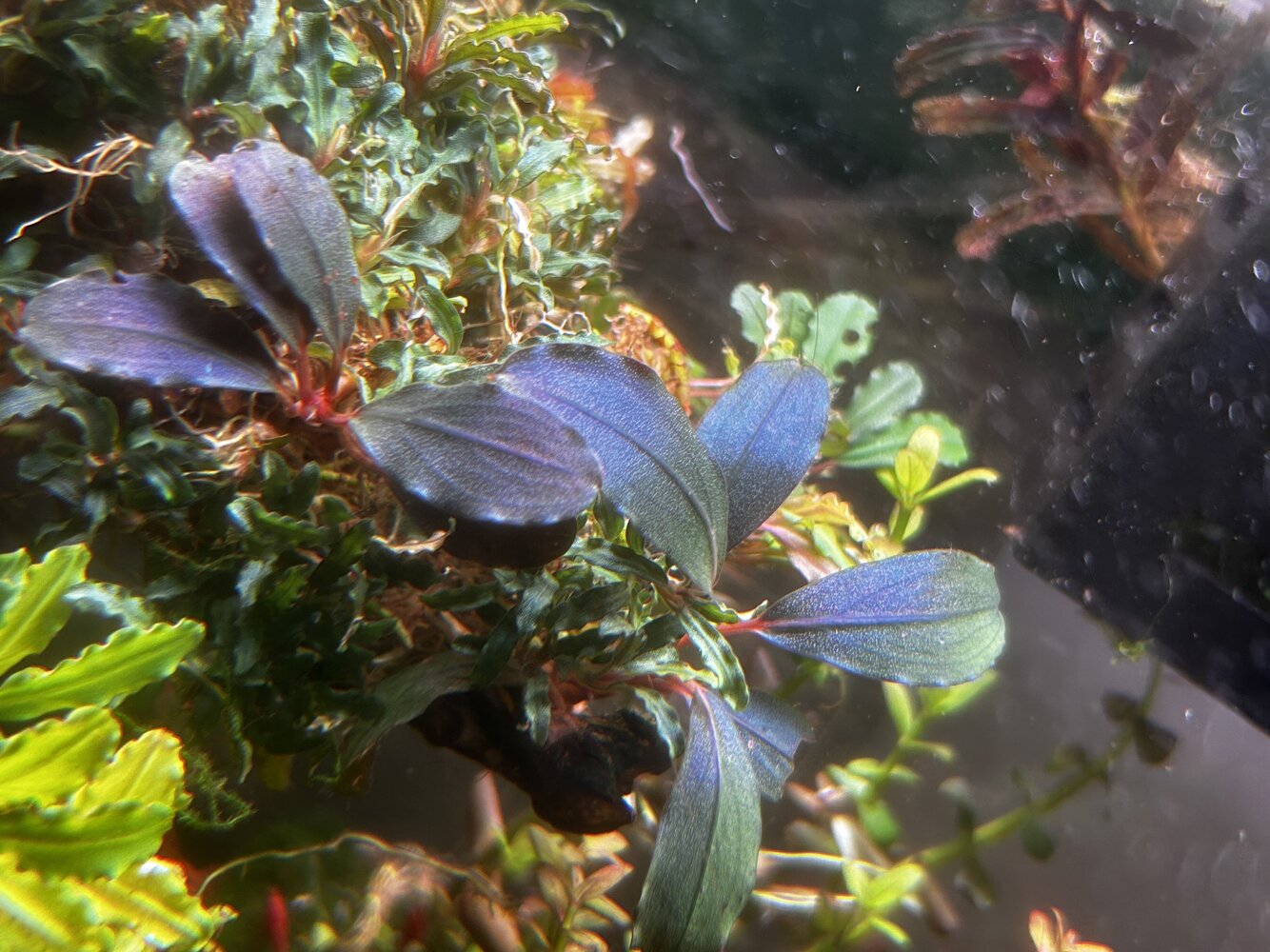 IMG_0011.jpeg1.6 MB · Views: 73
IMG_0011.jpeg1.6 MB · Views: 73 -
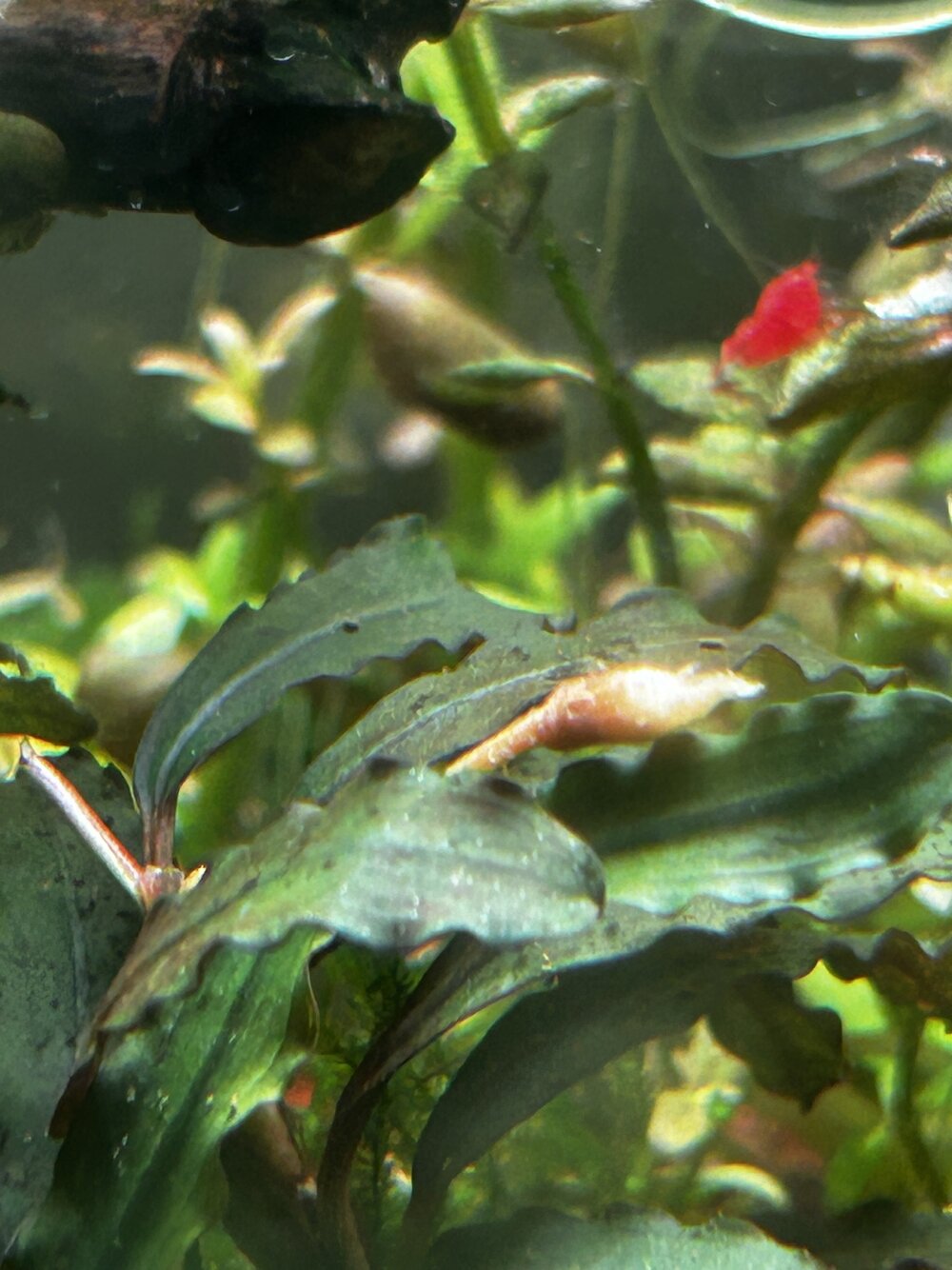 IMG_0133.jpeg955.6 KB · Views: 76
IMG_0133.jpeg955.6 KB · Views: 76 -
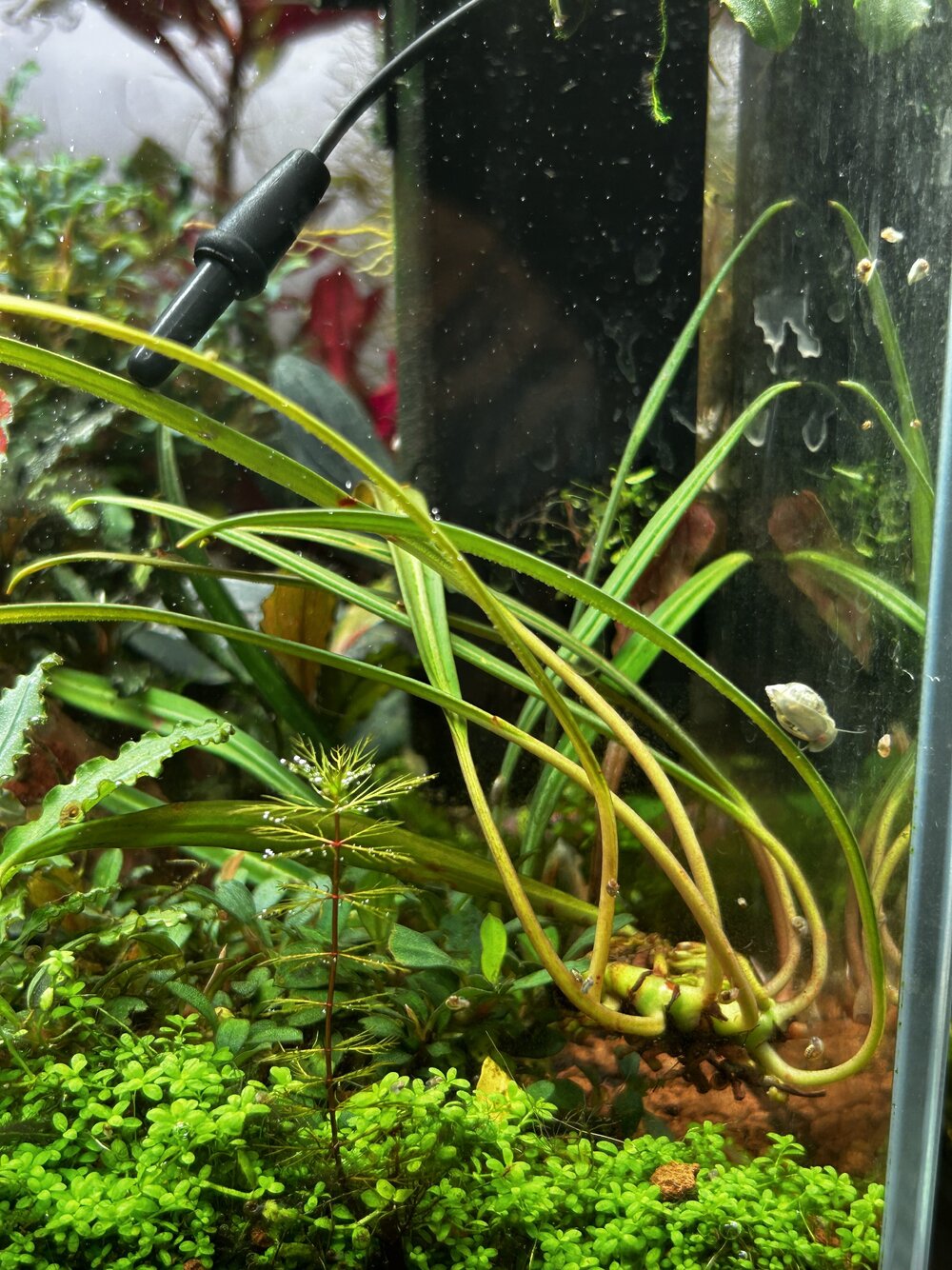 IMG_0181.jpeg1.8 MB · Views: 81
IMG_0181.jpeg1.8 MB · Views: 81 -
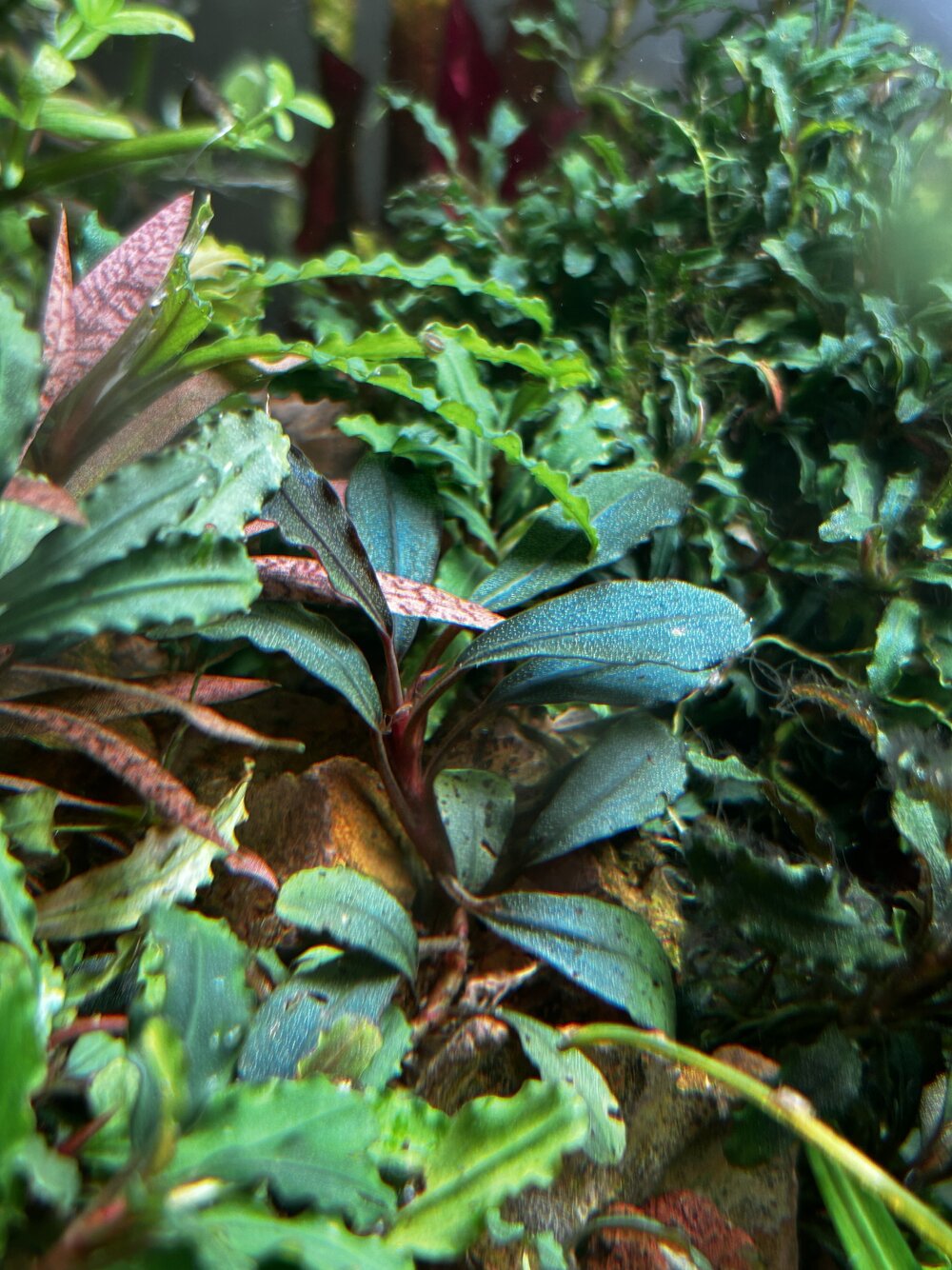 IMG_0182.jpeg1.6 MB · Views: 86
IMG_0182.jpeg1.6 MB · Views: 86 -
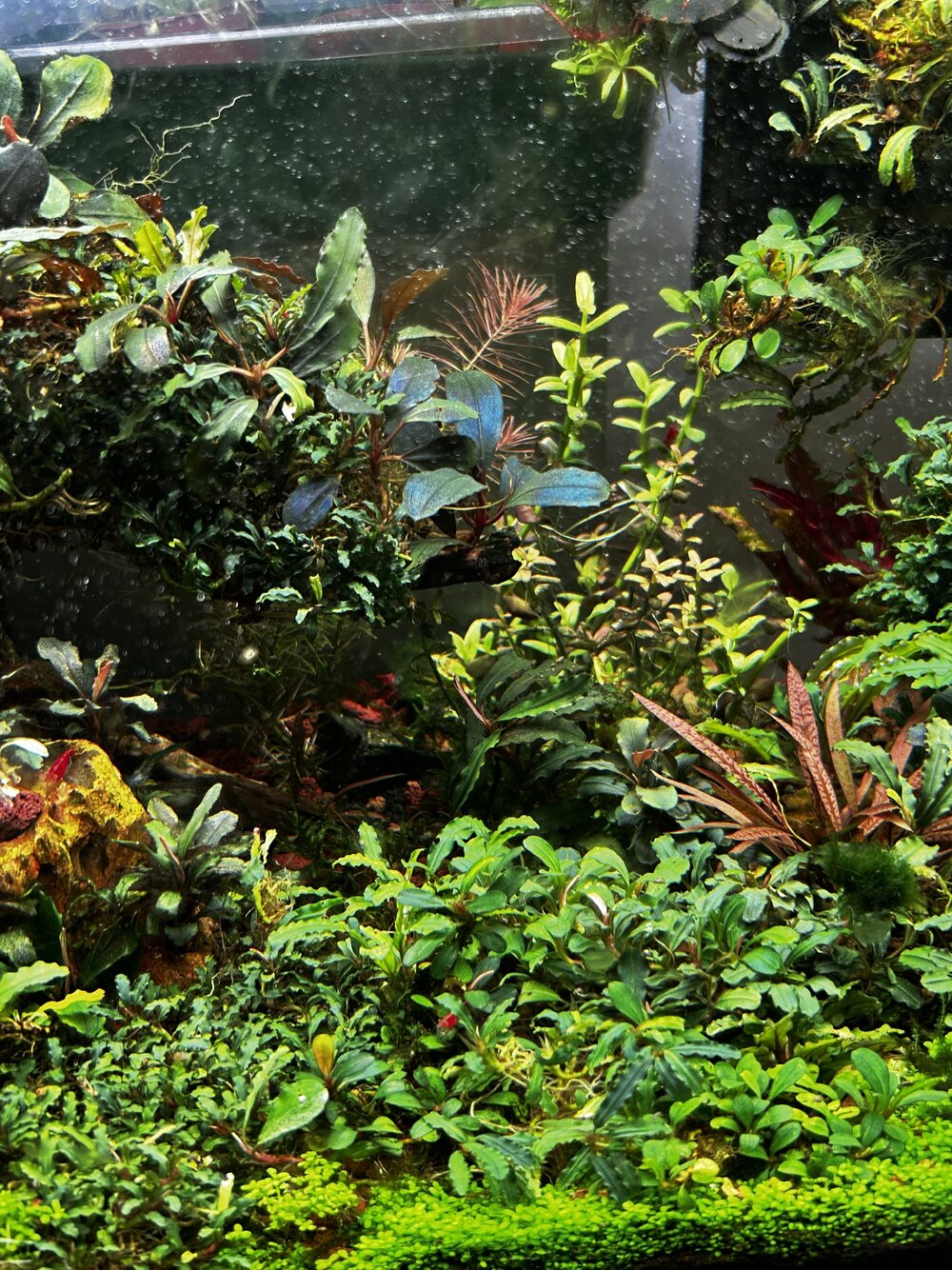 IMG_0194.jpeg2.4 MB · Views: 92
IMG_0194.jpeg2.4 MB · Views: 92 -
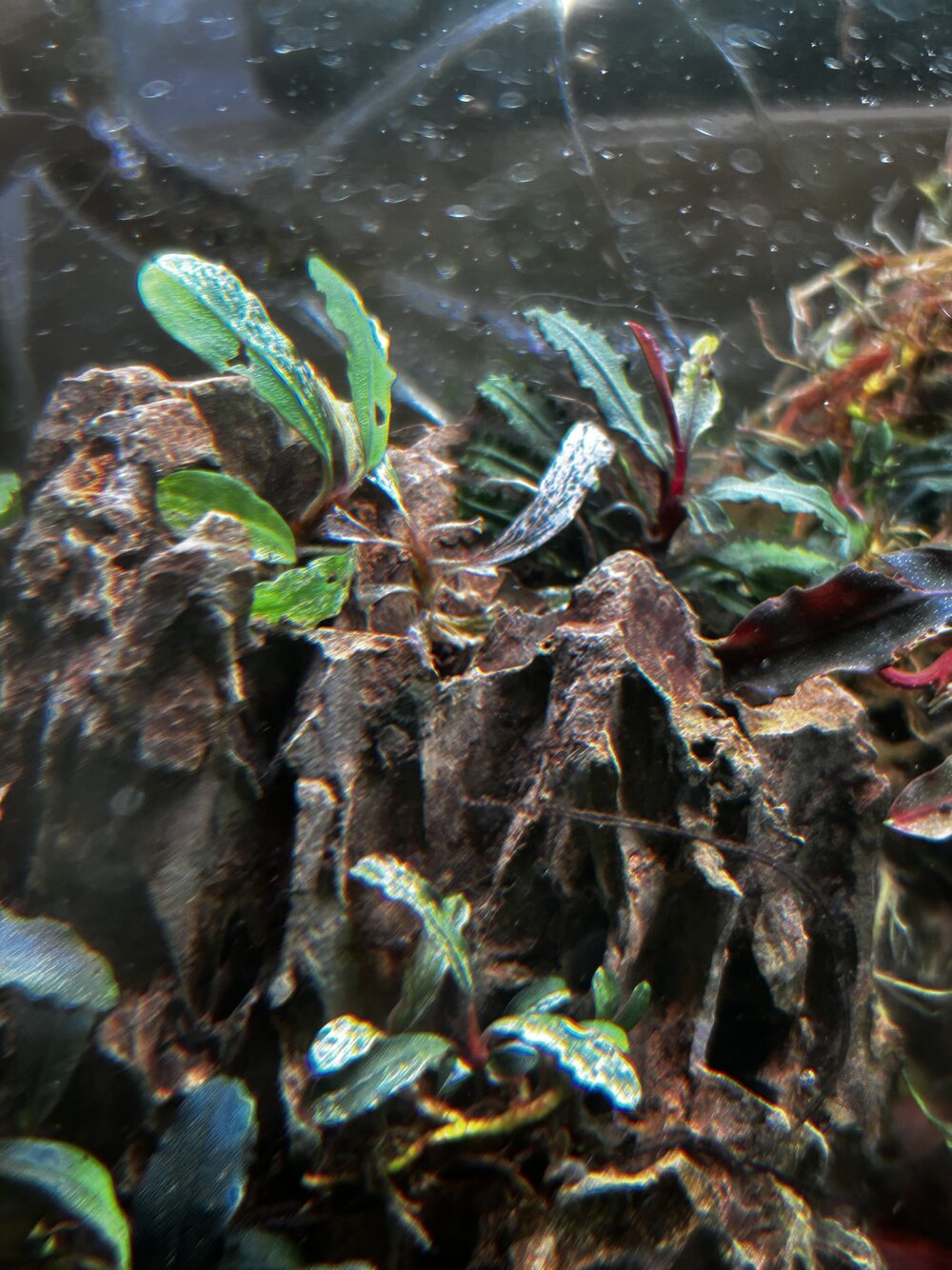 IMG_0190.jpeg1.5 MB · Views: 89
IMG_0190.jpeg1.5 MB · Views: 89 -
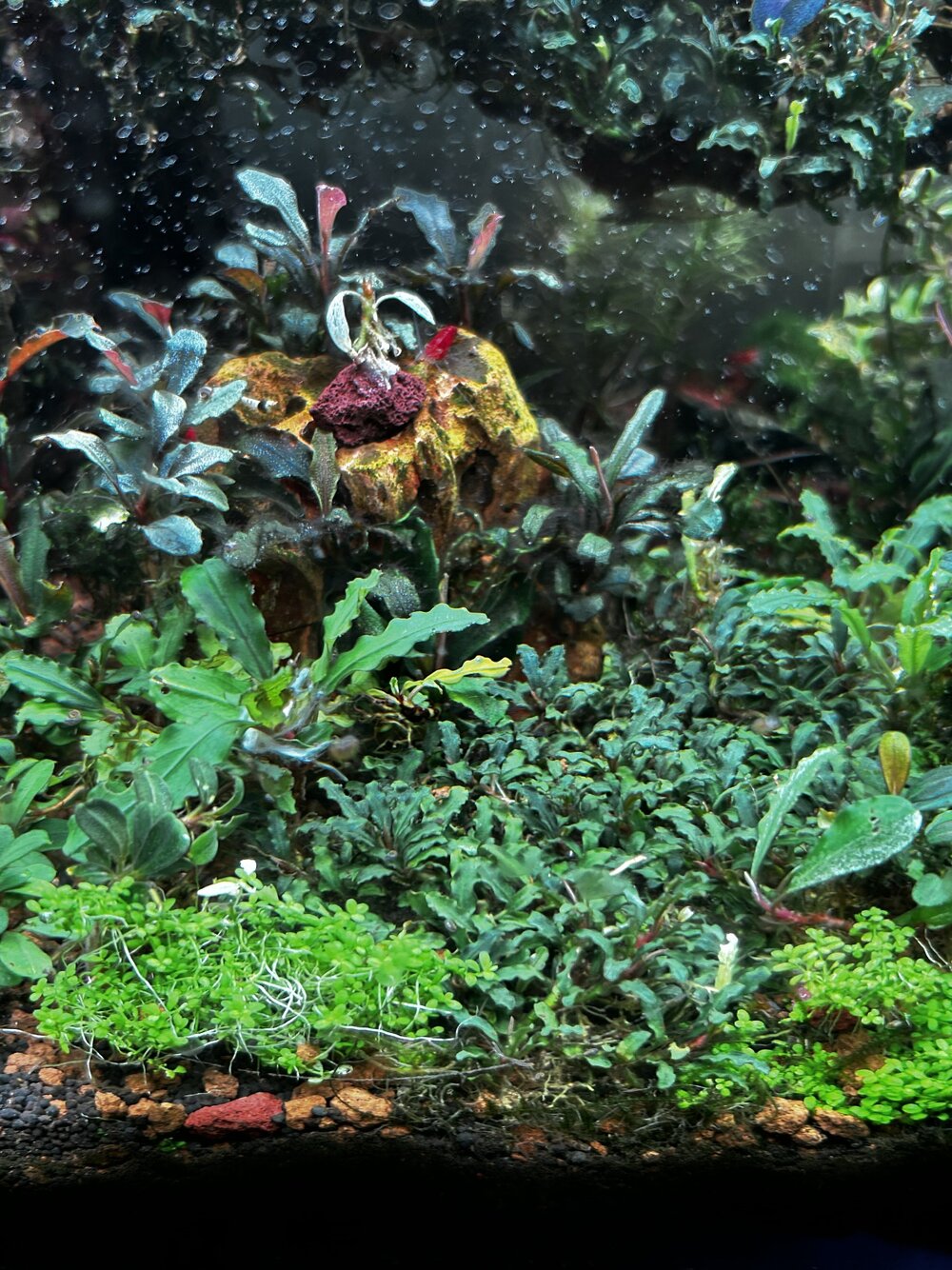 IMG_0193.jpeg2 MB · Views: 94
IMG_0193.jpeg2 MB · Views: 94 -
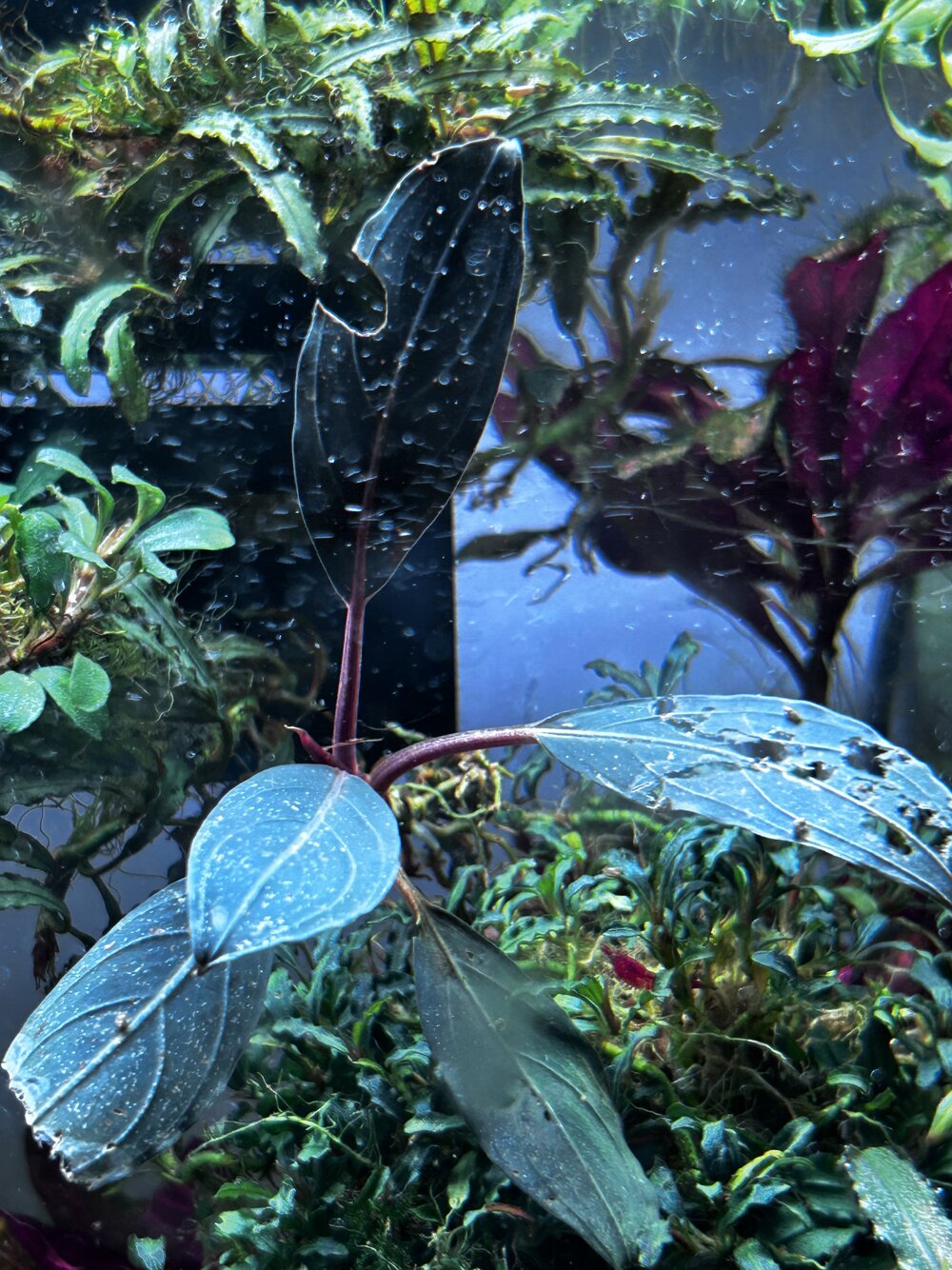 IMG_0187.jpeg1.6 MB · Views: 131
IMG_0187.jpeg1.6 MB · Views: 131 -
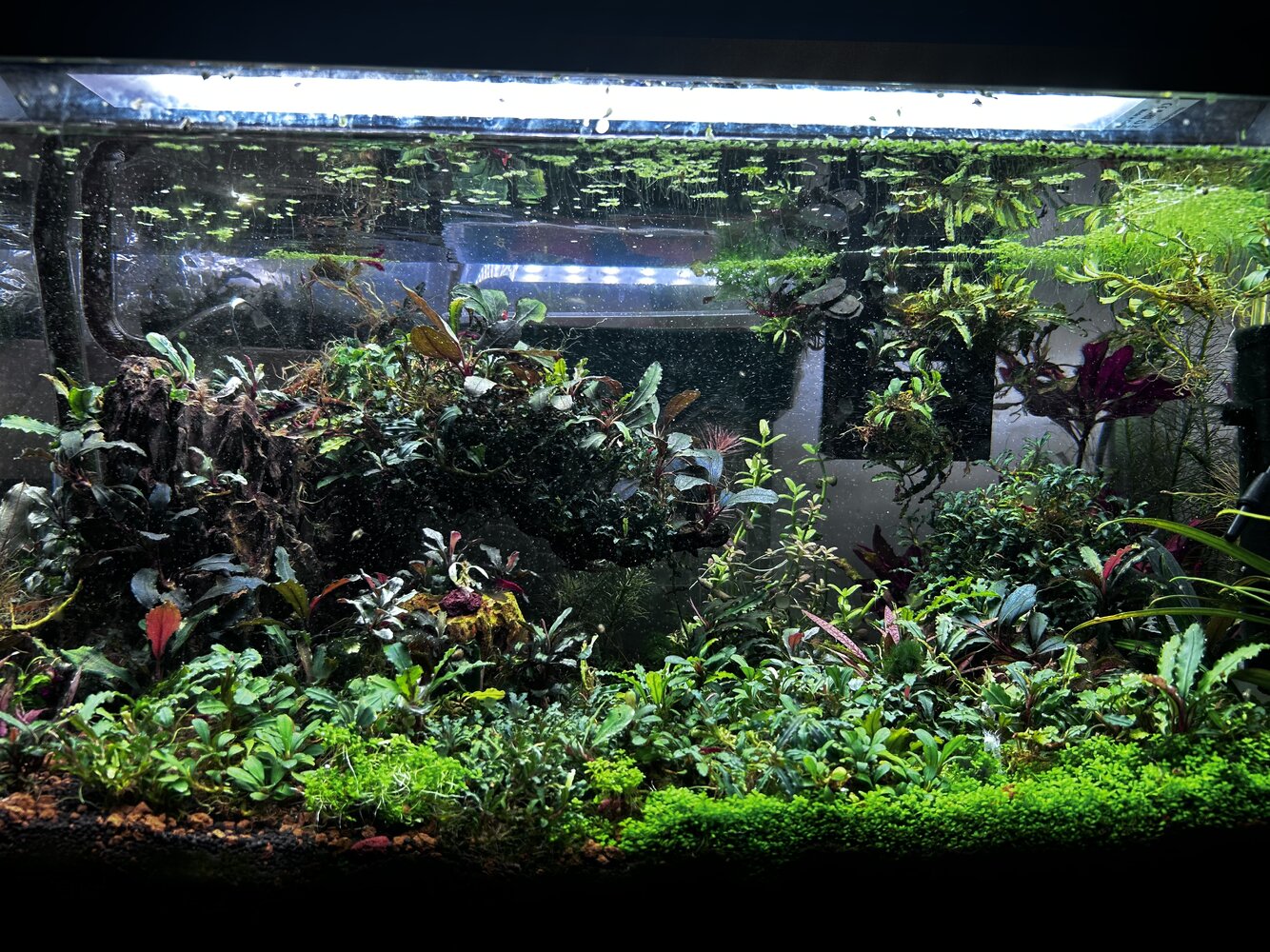 IMG_0184.jpeg4.5 MB · Views: 128
IMG_0184.jpeg4.5 MB · Views: 128 -
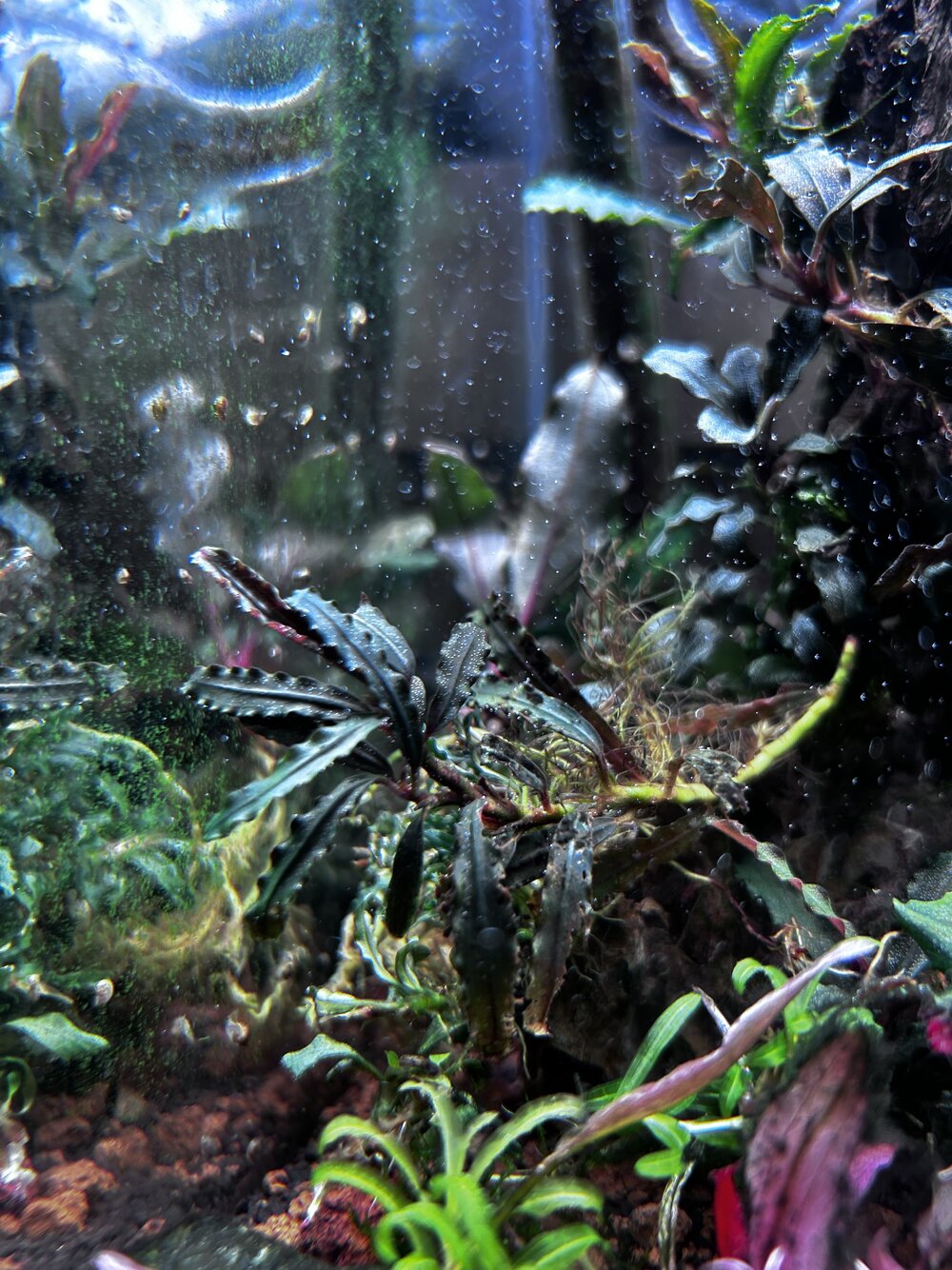 IMG_0186.jpeg1.8 MB · Views: 129
IMG_0186.jpeg1.8 MB · Views: 129 -
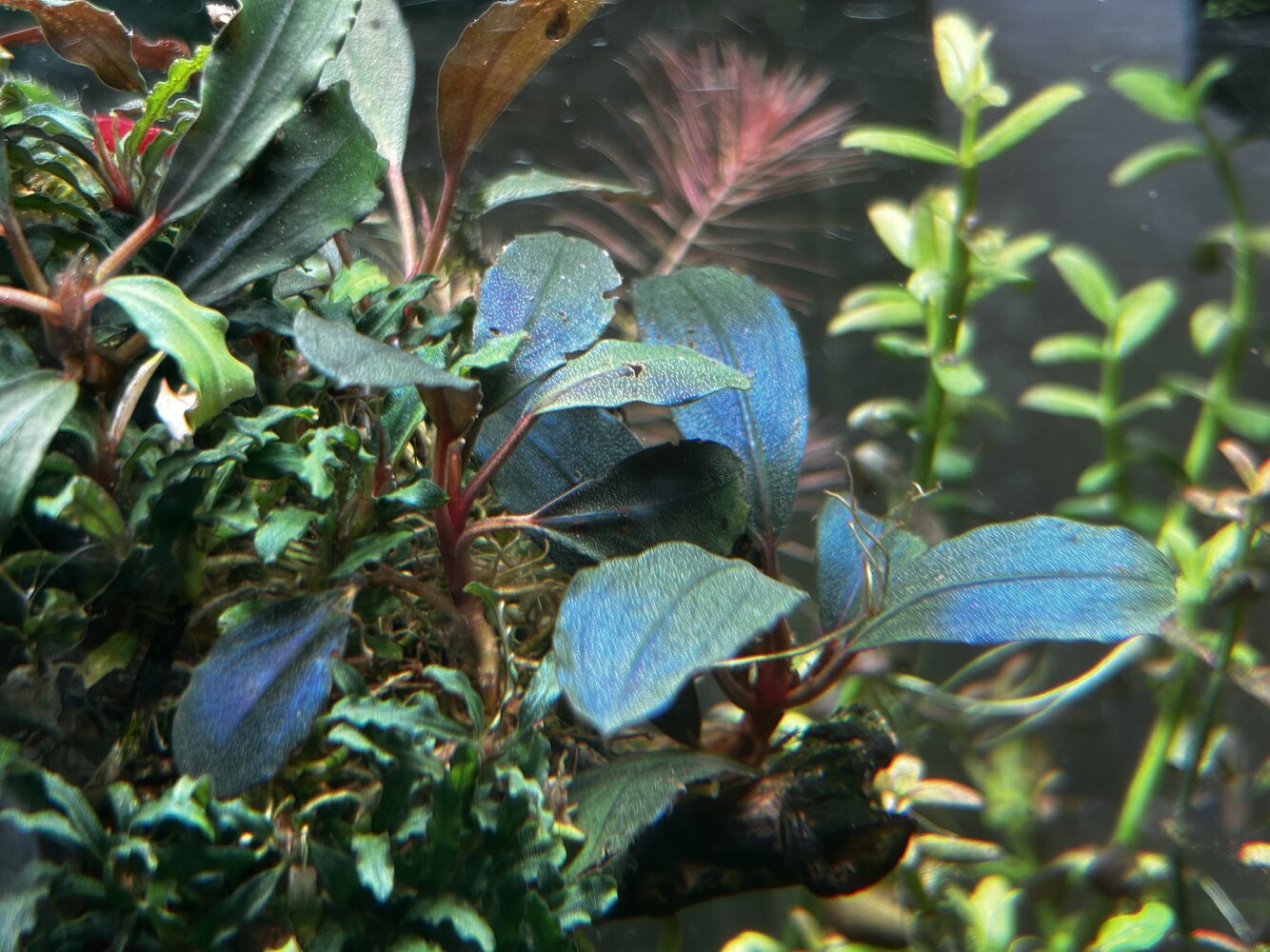 IMG_0183.jpeg2.5 MB · Views: 112
IMG_0183.jpeg2.5 MB · Views: 112 -
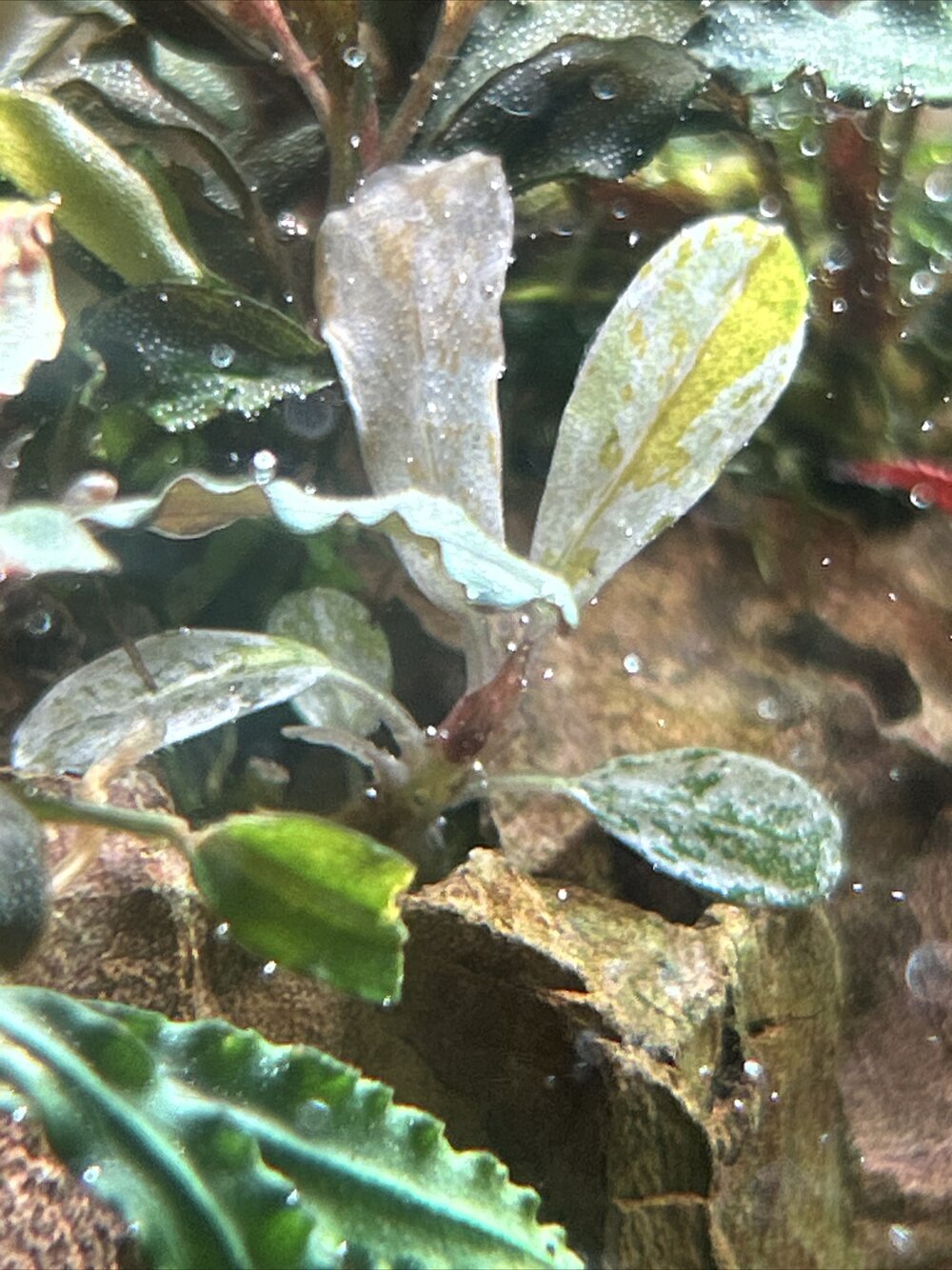 IMG_9653.jpeg702.2 KB · Views: 110
IMG_9653.jpeg702.2 KB · Views: 110
Nice project, will look great in a year a so when they have all grown in. The Filiformis looks to be an interesting catch, I'll have to keep my eyes peeled for that one.
I attached small buce to various pieces of hardscape around my tank but after three years they have now grown into four big bushes and I would imagine that typically the rarer (more expensive) varieties are the ones which have been grown over and crowded out, I now pretty much do not have a clue which varieties I have left (after trimming/replanting etc) and what type they are. Any of mine which have had the chance to root in the substrate have done so forming quite an extensive root system but do not appear to be more robust or different from their epiphyte conspecifics.
Nice looking tank, I look forward to seeing it develop.
Cheers!
I attached small buce to various pieces of hardscape around my tank but after three years they have now grown into four big bushes and I would imagine that typically the rarer (more expensive) varieties are the ones which have been grown over and crowded out, I now pretty much do not have a clue which varieties I have left (after trimming/replanting etc) and what type they are. Any of mine which have had the chance to root in the substrate have done so forming quite an extensive root system but do not appear to be more robust or different from their epiphyte conspecifics.
Nice looking tank, I look forward to seeing it develop.
Cheers!
CaridinaKid
New Member
Thanks for your reply, I was wondering if there was a better section of the forum to discuss more about Bucephalandra, I believe though also gave an introduction when I first joined gave me some advice on NOT to get an Otocinclus to clear up my hair/BBA issues.
I followed that advice and started cutting my lights back from 8 hours to 6.5 hours and dosed some Tetra AlguMin which removed 90% of the issues within a few days.
To continue with the bit regarding buce or epiphyte roots in or out the substrate (maybe should be properly discussed in a new thread with more people’s input/experience):
I had an interesting experience in which I had moved a piece of driftwood with some melted Buce rhizome into my dedicated shrimp breeding tank (no ferts or CO2), although the substrate was rich (Amazonia). When I removed the driftwood after a few weeks I discovered that the rhizome had developed deep roots into the substrate and there were new leaves growing. The nutrients in the water column were probably quite poor (not much livestock to generate nitrogen either) but the substrate was top quality.
ive come to this hypothesis: Bucephalandra primarily draws nutrients from its roots, and it can perhaps equally draw these nutrients from the water column or from the substrate. So if you have a low tech tank with perhaps less nutrients/fert dosing in the water column, you might be better off letting the roots develop into your rich(er) substrate. But if you’re in a system where you’re dosing heavy fertilizers anyway..perhaps it doesn’t matter?
Seems like a relatively simple experiment to do, have two equal size/leaf amount rhizome cuttings and simply plant one with roots in, and one with roots out (taking care that the differences in distance to the light source doesn’t become a variable)- any thoughts?
I followed that advice and started cutting my lights back from 8 hours to 6.5 hours and dosed some Tetra AlguMin which removed 90% of the issues within a few days.
To continue with the bit regarding buce or epiphyte roots in or out the substrate (maybe should be properly discussed in a new thread with more people’s input/experience):
I had an interesting experience in which I had moved a piece of driftwood with some melted Buce rhizome into my dedicated shrimp breeding tank (no ferts or CO2), although the substrate was rich (Amazonia). When I removed the driftwood after a few weeks I discovered that the rhizome had developed deep roots into the substrate and there were new leaves growing. The nutrients in the water column were probably quite poor (not much livestock to generate nitrogen either) but the substrate was top quality.
ive come to this hypothesis: Bucephalandra primarily draws nutrients from its roots, and it can perhaps equally draw these nutrients from the water column or from the substrate. So if you have a low tech tank with perhaps less nutrients/fert dosing in the water column, you might be better off letting the roots develop into your rich(er) substrate. But if you’re in a system where you’re dosing heavy fertilizers anyway..perhaps it doesn’t matter?
Seems like a relatively simple experiment to do, have two equal size/leaf amount rhizome cuttings and simply plant one with roots in, and one with roots out (taking care that the differences in distance to the light source doesn’t become a variable)- any thoughts?
Well, I say go for it, as I mentioned above I never saw any noticeable difference between the two but one variable is the buces that are rooted into the substrate were obviously further away from the light than the ones which are attached (I use the word attached very loosely) to the hardscape higher up in the column. For info, I also dose pretty lean and add one root tab in various areas of the substrate per week to try and keep fert dosing pretty stable. I look forward to seeing what happens.Seems like a relatively simple experiment to do, have two equal size/leaf amount rhizome cuttings and simply plant one with roots in, and one with roots out (taking care that the differences in distance to the light source doesn’t become a variable)- any thoughts?
whitecloud
New Member
Would love an update on your buce experiment if you have any to share!
It depends on the rhizome....if it is soft, it's usually unrecoverable.Also would love an update.
My filiformis just melted due to a significant flow change. Curious on its robustness to regrow or if it’s likely a lost cause.


